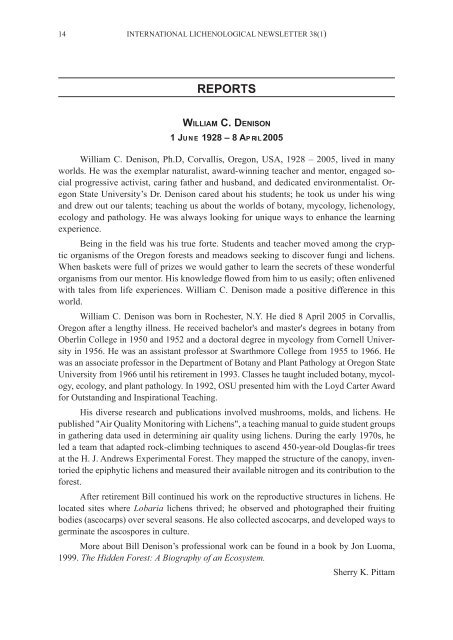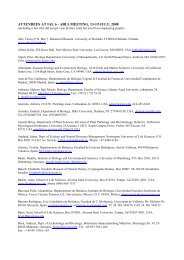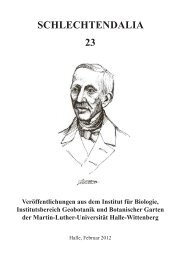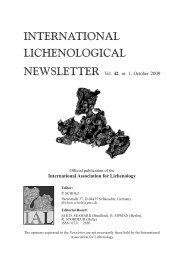NEWS - International Association for Lichenology
NEWS - International Association for Lichenology
NEWS - International Association for Lichenology
You also want an ePaper? Increase the reach of your titles
YUMPU automatically turns print PDFs into web optimized ePapers that Google loves.
14 INTERNATIONAL LICHENOLOGICAL <strong>NEWS</strong>LETTER 38(1)<br />
REPORTS<br />
WILLIAM C. DENISON<br />
1 JUNE 1928 – 8 APRIL 2005<br />
William C. Denison, Ph.D, Corvallis, Oregon, USA, 1928 – 2005, lived in many<br />
worlds. He was the exemplar naturalist, award-winning teacher and mentor, engaged social<br />
progressive activist, caring father and husband, and dedicated environmentalist. Oregon<br />
State University’s Dr. Denison cared about his students; he took us under his wing<br />
and drew out our talents; teaching us about the worlds of botany, mycology, lichenology,<br />
ecology and pathology. He was always looking <strong>for</strong> unique ways to enhance the learning<br />
experience.<br />
Being in the fi eld was his true <strong>for</strong>te. Students and teacher moved among the cryptic<br />
organisms of the Oregon <strong>for</strong>ests and meadows seeking to discover fungi and lichens.<br />
When baskets were full of prizes we would gather to learn the secrets of these wonderful<br />
organisms from our mentor. His knowledge fl owed from him to us easily; often enlivened<br />
with tales from life experiences. William C. Denison made a positive difference in this<br />
world.<br />
William C. Denison was born in Rochester, N.Y. He died 8 April 2005 in Corvallis,<br />
Oregon after a lengthy illness. He received bachelor's and master's degrees in botany from<br />
Oberlin College in 1950 and 1952 and a doctoral degree in mycology from Cornell University<br />
in 1956. He was an assistant professor at Swarthmore College from 1955 to 1966. He<br />
was an associate professor in the Department of Botany and Plant Pathology at Oregon State<br />
University from 1966 until his retirement in 1993. Classes he taught included botany, mycology,<br />
ecology, and plant pathology. In 1992, OSU presented him with the Loyd Carter Award<br />
<strong>for</strong> Outstanding and Inspirational Teaching.<br />
His diverse research and publications involved mushrooms, molds, and lichens. He<br />
published "Air Quality Monitoring with Lichens", a teaching manual to guide student groups<br />
in gathering data used in determining air quality using lichens. During the early 1970s, he<br />
led a team that adapted rock-climbing techniques to ascend 450-year-old Douglas-fi r trees<br />
at the H. J. Andrews Experimental Forest. They mapped the structure of the canopy, inventoried<br />
the epiphytic lichens and measured their available nitrogen and its contribution to the<br />
<strong>for</strong>est.<br />
After retirement Bill continued his work on the reproductive structures in lichens. He<br />
located sites where Lobaria lichens thrived; he observed and photographed their fruiting<br />
bodies (ascocarps) over several seasons. He also collected ascocarps, and developed ways to<br />
germinate the ascospores in culture.<br />
More about Bill Denison’s professional work can be found in a book by Jon Luoma,<br />
1999. The Hidden Forest: A Biography of an Ecosystem.<br />
Sherry K. Pittam






